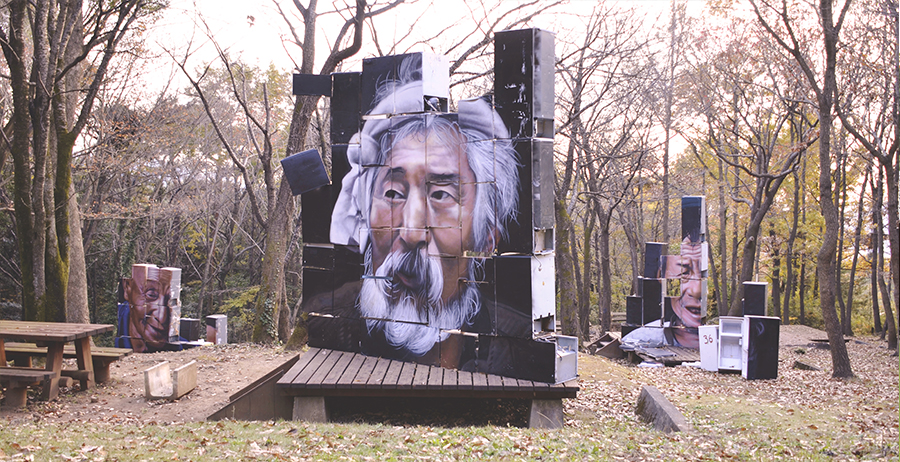

Thanks to their hard work and sacrifice, the Japanese have experienced an impressive rise of their economy since the beginning of the second half of the 20th Century. Japan has become a referent for many people all over the world because it has reached a level of development that many countries wish to achieve in the game of capitalism. This fact makes Japan not only a model, but also an example in which we can clearly see the impact of this economic policy.
This work focuses on obsolescence; a side-effect of modern-day capitalism. It also addresses the way how the system extends the boundaries of this issue by objectifying people and turning them into mere devices that can be discarded once they are no longer useful.



These portraits correspond to five of the thousands of homeless people in Tokyo, one of the cities with the highest rate of homeless people in the world. The surface chosen to present these portraits is used fridges which were collected after they had been thrown away. This discarded material has been selected in order to establish a relationship between the portrait and the object on which the surface is painted. This dialogue evidences the parallelism between subject and object.
Capitalism is supposed to be a way to understand the economy and was once defined as the science that studies the efficient management of resources. According to this paradigm, obsolescence has no place. It has been thanks to an omission of this basic principle that we have inherited this system where both resources and people are easy to discard. The purpose of economic management has been affected by this disturbance.
This layout opens a debate about the repercussions of capitalism and though the artwork shows some evidence, it also evokes many other questions.








